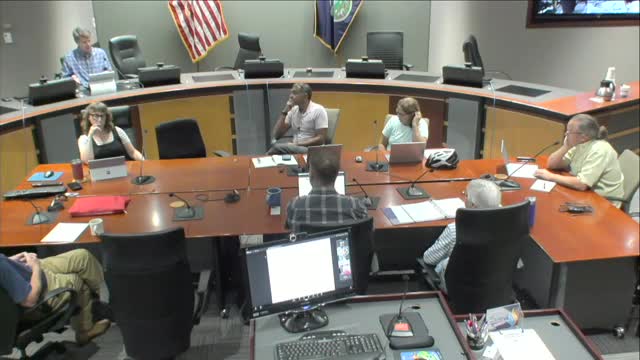City plans to limit cul de sacs for safer streets
August 15, 2024 | Lawrence, Douglas County, Kansas

This article was created by AI summarizing key points discussed. AI makes mistakes, so for full details and context, please refer to the video of the full meeting. Please report any errors so we can fix them. Report an error »

During a recent government meeting, city planners engaged in a detailed discussion regarding transportation infrastructure and urban design, particularly focusing on the implications of cul de sac layouts versus grid street systems. The conversation highlighted the need for thoughtful planning to ensure that transportation modes are conducive to the overall urban environment.
Commissioner Rexroad emphasized the importance of applicants articulating their design choices, suggesting that understanding the rationale behind these decisions could lead to more effective circulation plans. The dialogue underscored the necessity of aligning policy with practical design standards to enhance community safety and accessibility.
A significant portion of the meeting was dedicated to the historical context of cul de sac development. One commissioner noted that while many residents enjoy living in cul de sacs, these designs can hinder emergency services and pedestrian access. The discussion pointed out that grid street systems, which were more common before the mid-20th century, offer better connectivity and safety for both pedestrians and cyclists.
The planners concluded that moving forward, the city would impose restrictions on cul de sac developments in favor of more interconnected street layouts. This shift aims to improve infrastructure investment and ensure safer environments for residents, particularly children commuting to school. The meeting reflected a commitment to evolving urban design practices that prioritize community needs and safety.
Commissioner Rexroad emphasized the importance of applicants articulating their design choices, suggesting that understanding the rationale behind these decisions could lead to more effective circulation plans. The dialogue underscored the necessity of aligning policy with practical design standards to enhance community safety and accessibility.
A significant portion of the meeting was dedicated to the historical context of cul de sac development. One commissioner noted that while many residents enjoy living in cul de sacs, these designs can hinder emergency services and pedestrian access. The discussion pointed out that grid street systems, which were more common before the mid-20th century, offer better connectivity and safety for both pedestrians and cyclists.
The planners concluded that moving forward, the city would impose restrictions on cul de sac developments in favor of more interconnected street layouts. This shift aims to improve infrastructure investment and ensure safer environments for residents, particularly children commuting to school. The meeting reflected a commitment to evolving urban design practices that prioritize community needs and safety.
View full meeting
This article is based on a recent meeting—watch the full video and explore the complete transcript for deeper insights into the discussion.
View full meeting
